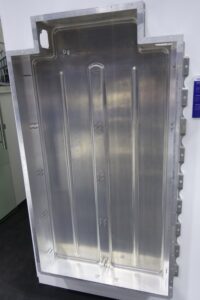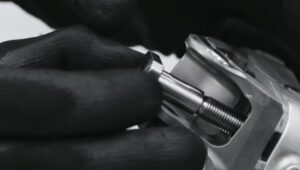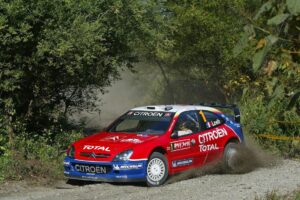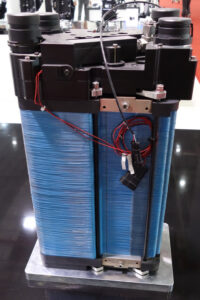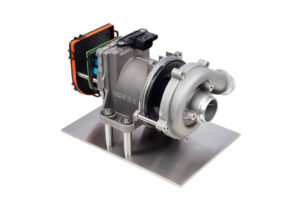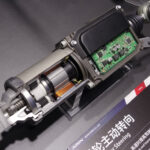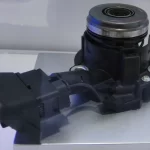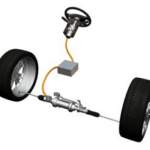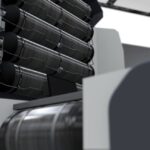
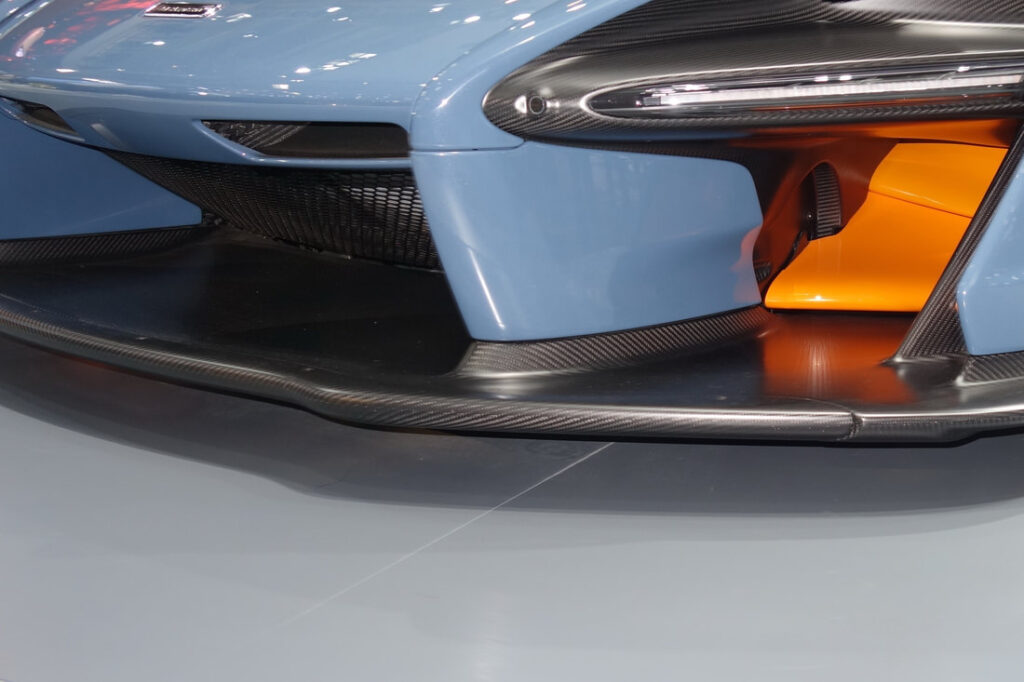
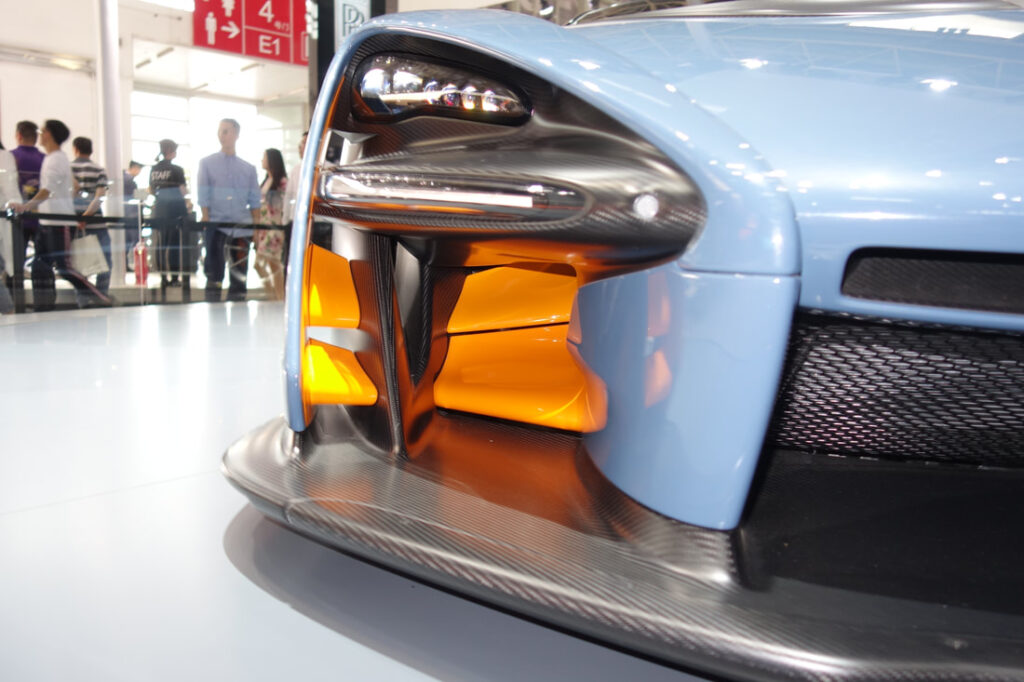
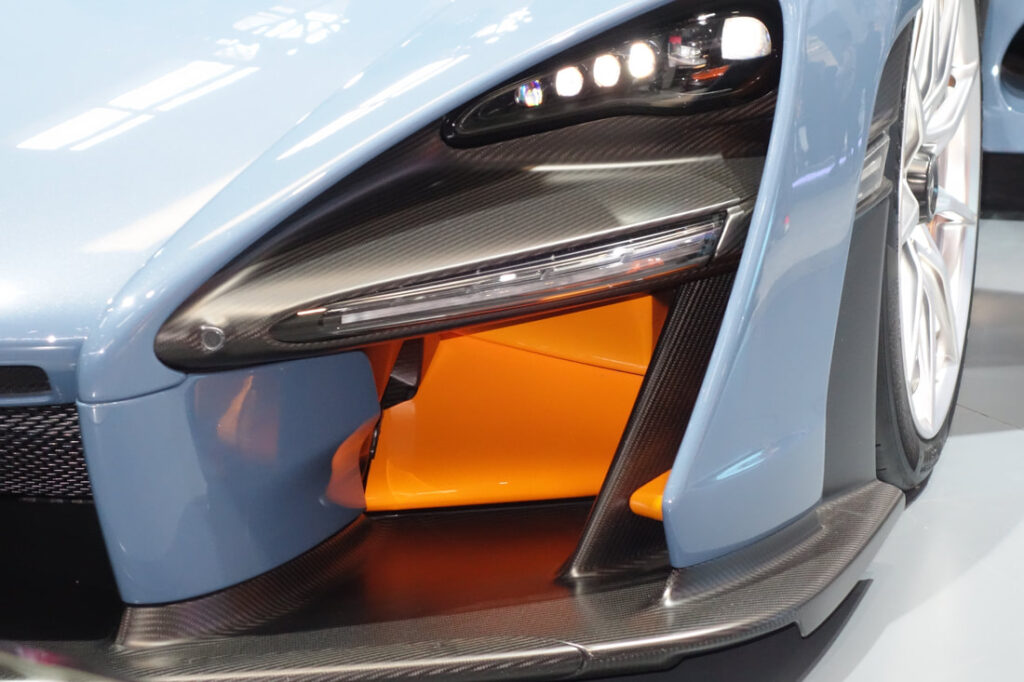
Secondary fixed aero blades and the slot-gaps located between the headlights and daytime running lights.
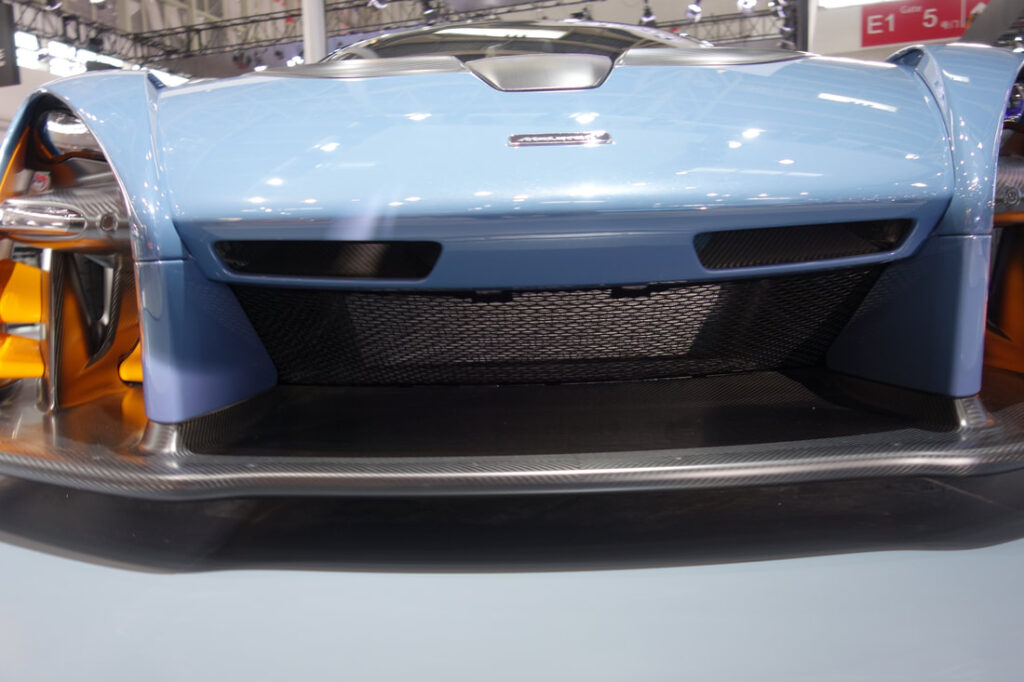
Cooling air is driven into a central intake, which vents via two ducts in the bonnet.
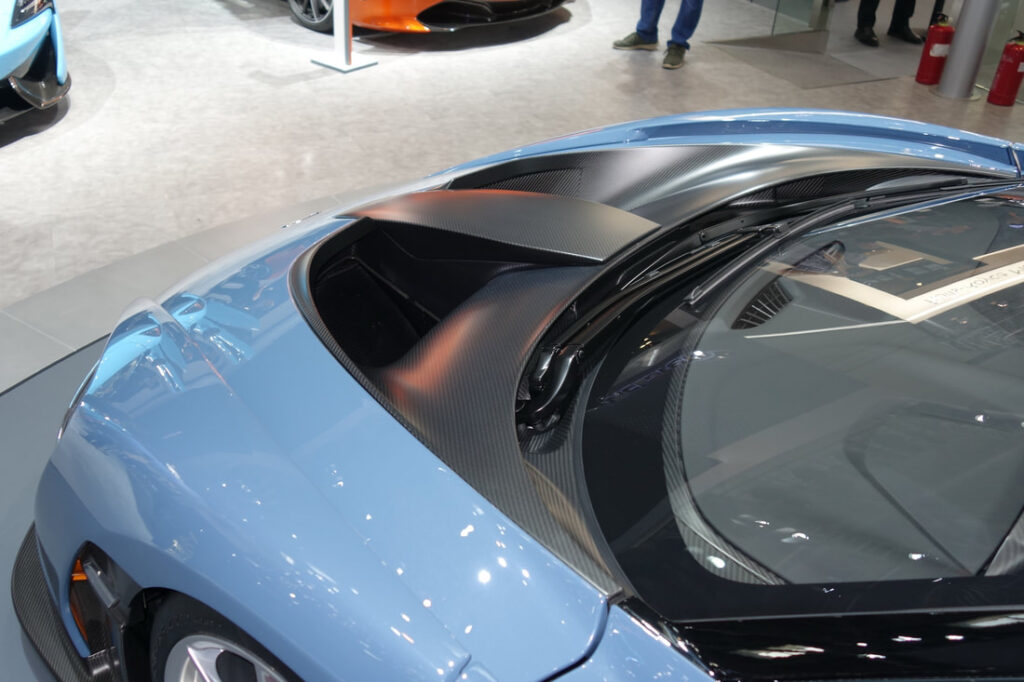
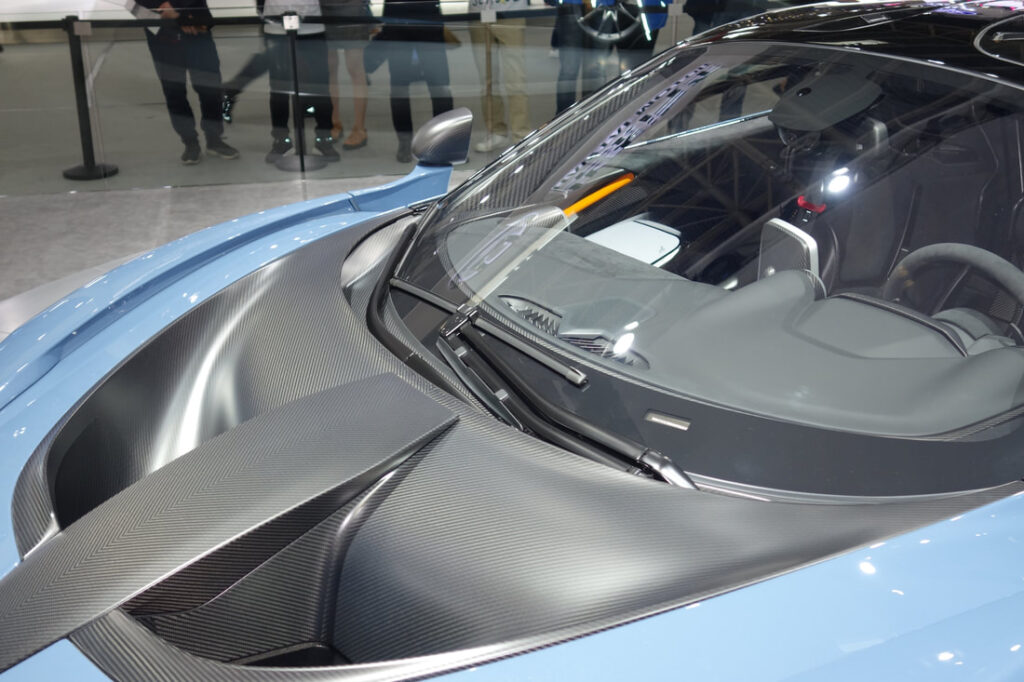
Two central front bumper ducts set below the McLaren badge – appearing almost as nostrils – guide air through the front clamshell to help generate downforce.
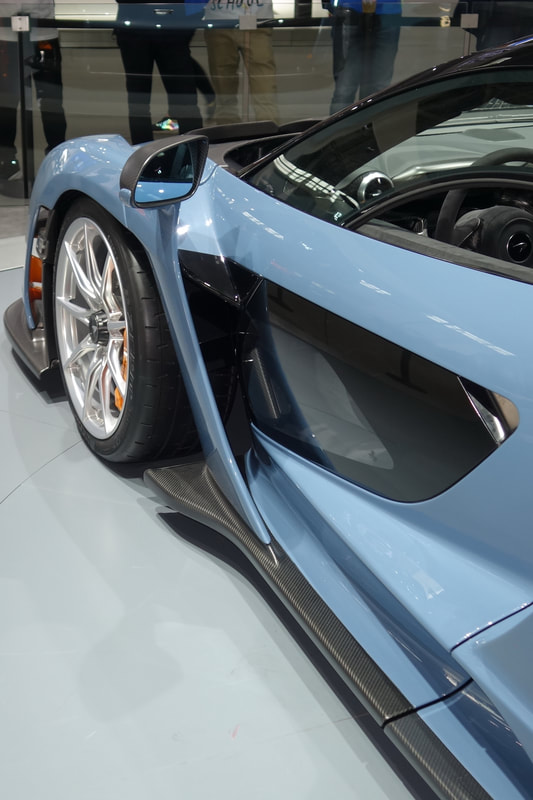
Air that has passed through the narrow channel between the headlights and daytime running lights joins one of the most aerodynamically complex sections of the McLaren Senna. Together with airflow from the front fender aero ducts – which sit outboard from the active aero blade intakes – airflow is directed around the front wheels. This serves to calm the wake generated as the wheels turn during cornering, cleaning up the airflow that moves towards the rear of the vehicle. Large openings in the wheel arches serve to reduce turbulent pressure.
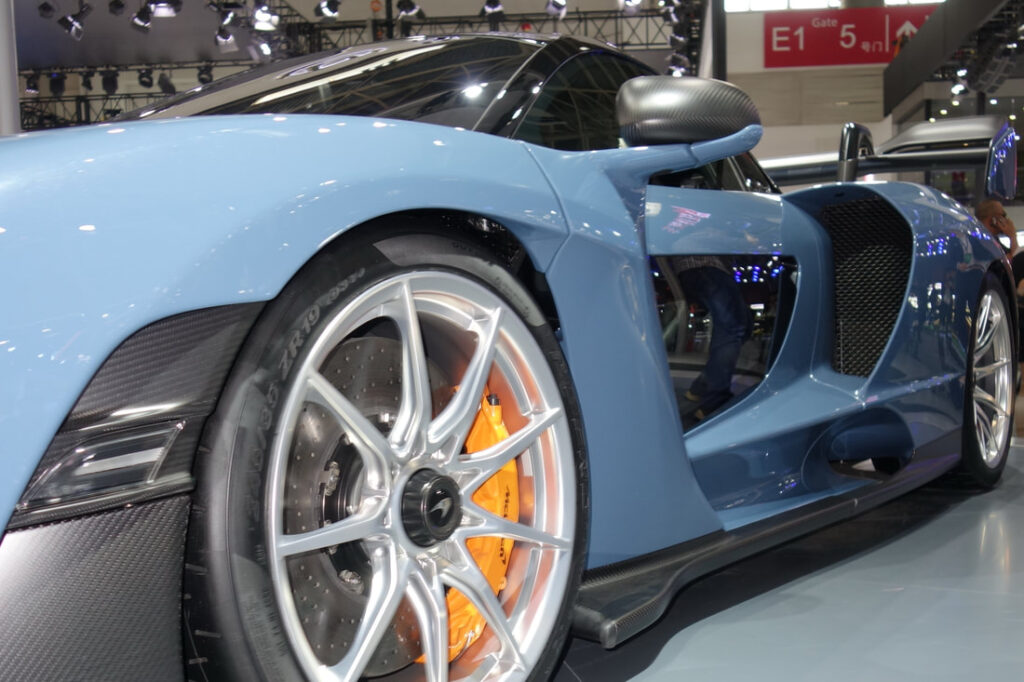
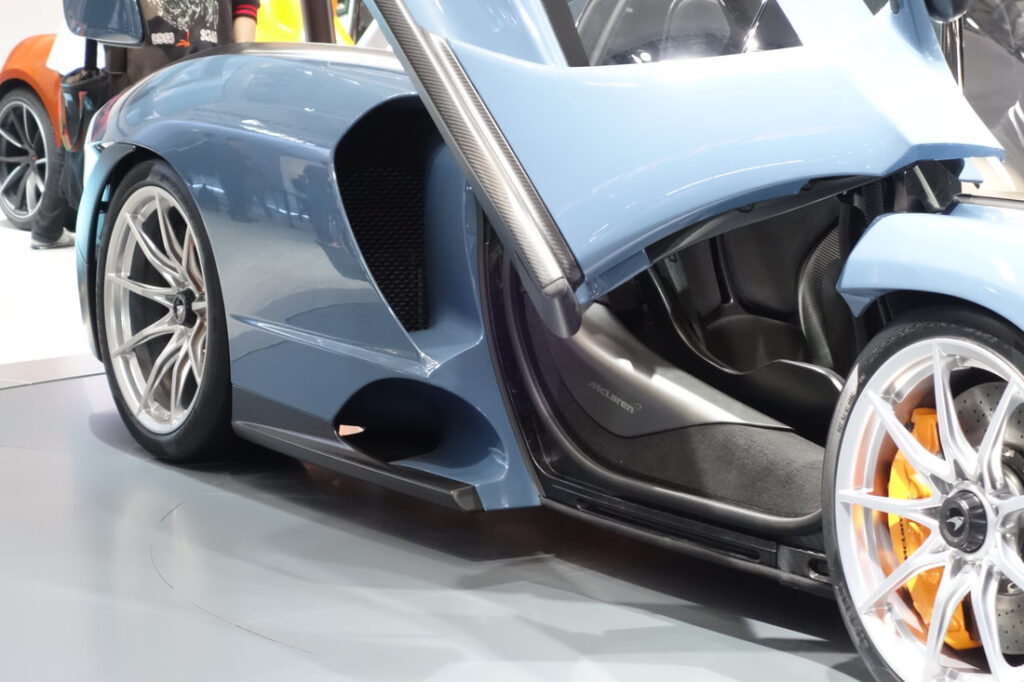
An individual rear fender panel, which incorporates an upper intake to cool the high-temperature radiator (HTR) and a lower intake to feed the brake duct, weighs a mere 2.87kg, with a panel thickness of just 1mm. A complete front fender panel is 0.66kg.

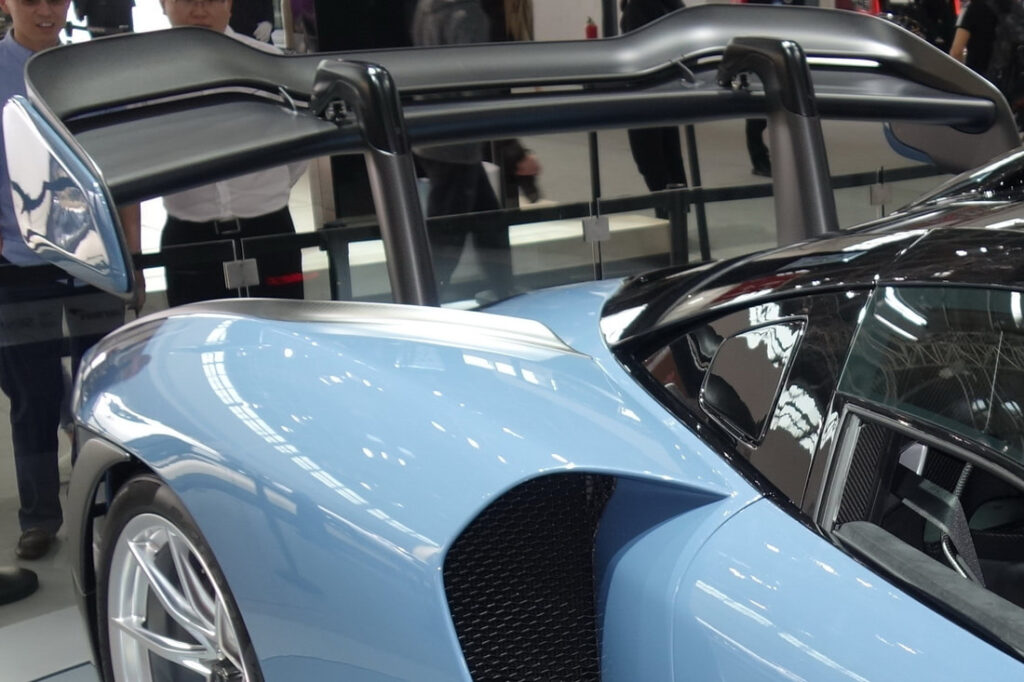
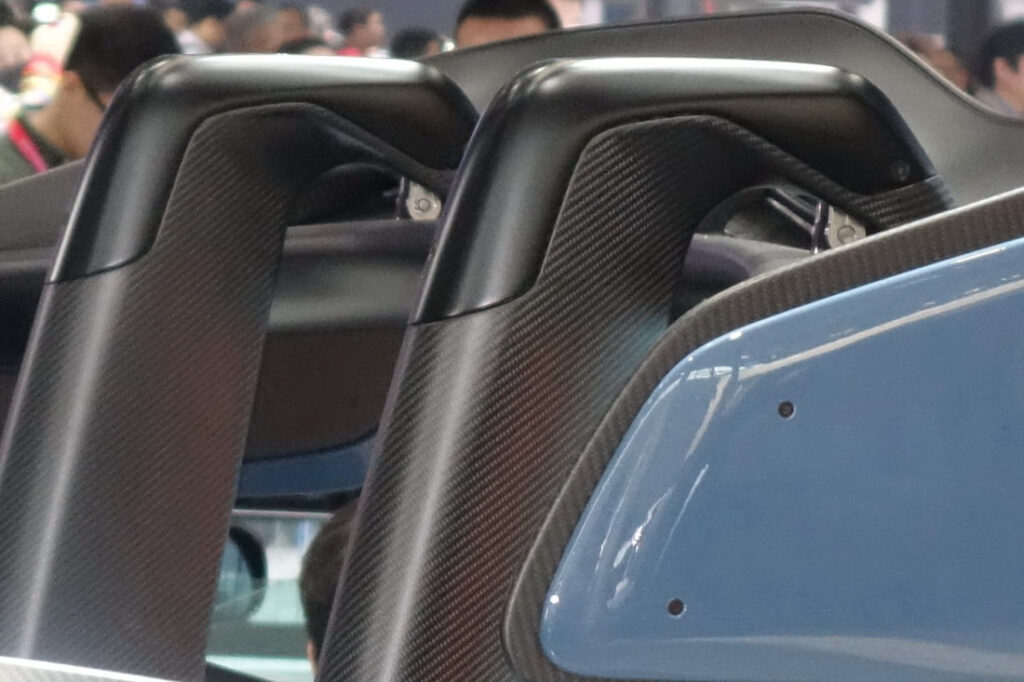
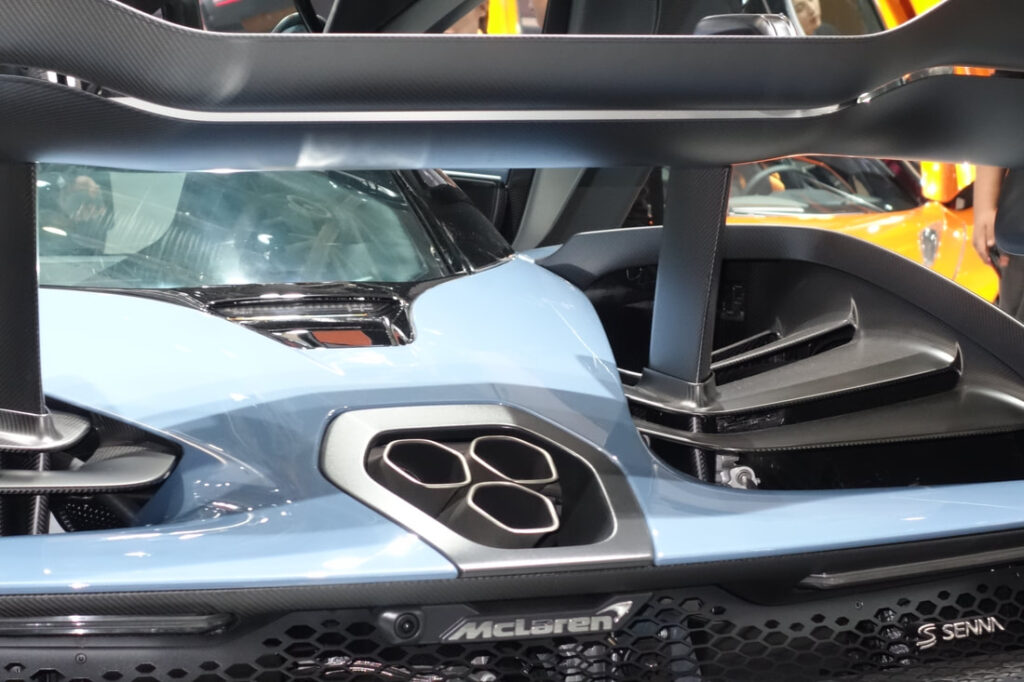
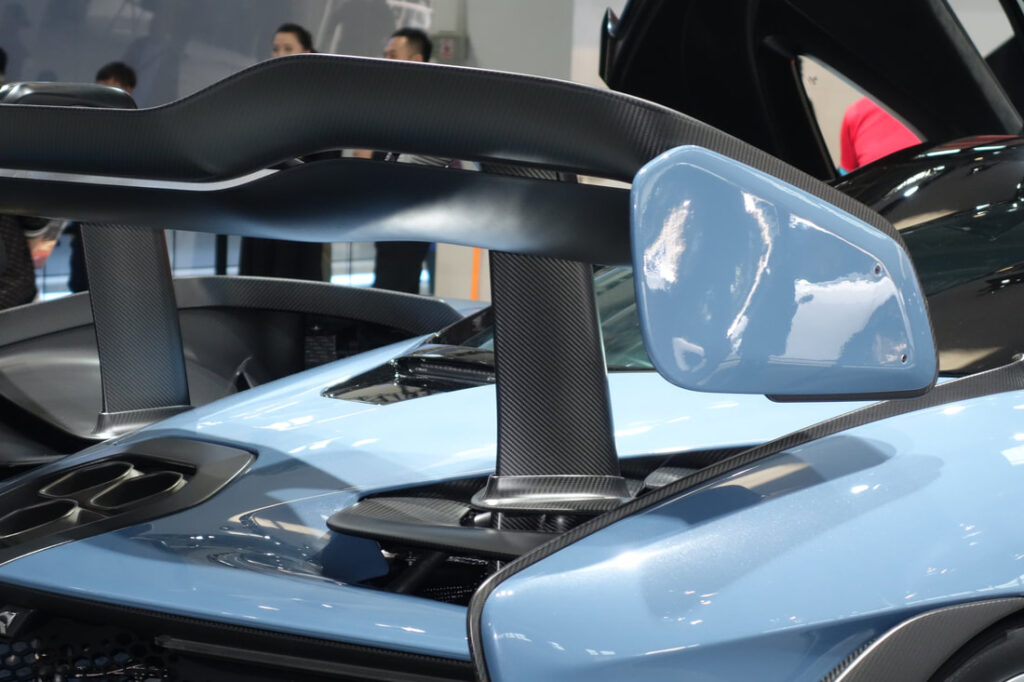
The wing, which is hydraulically operated, constantly adjusts to optimise the levels of downforce and maintain an ideal aerodynamic balance.

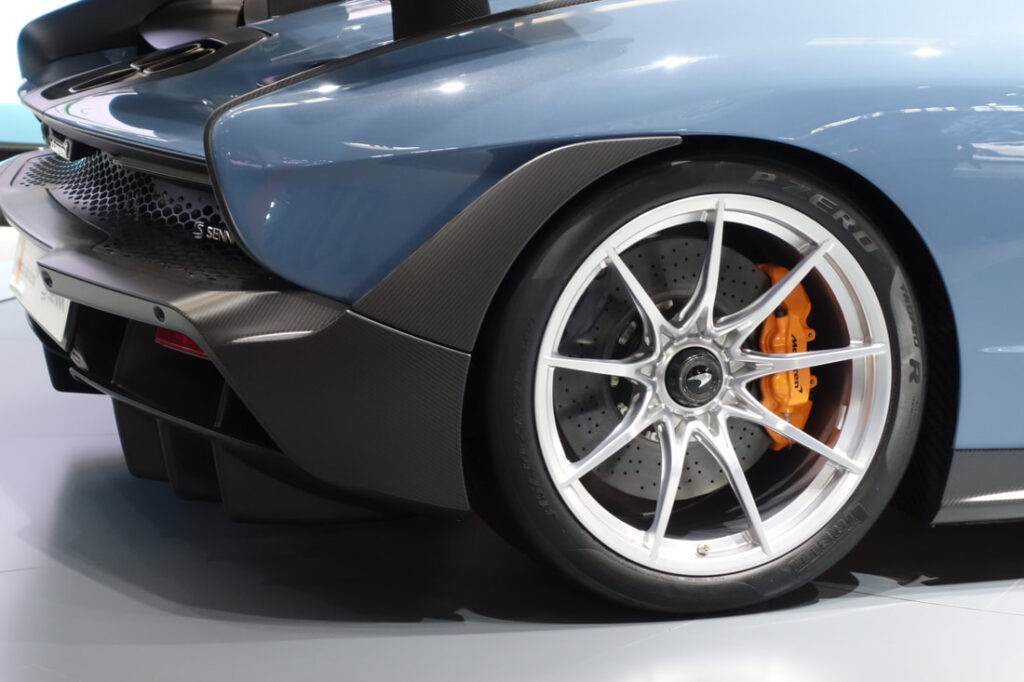
Prominent ‘gurney flaps’ ahead of a succession of stepped louvres direct air away from the rear deck and down the sides of the body. The resulting area of low pressure draws hot air out from the high-temperature radiators and engine bay, with the louvres ensuring that the airflow does not impact the efficiency of the rear wing.
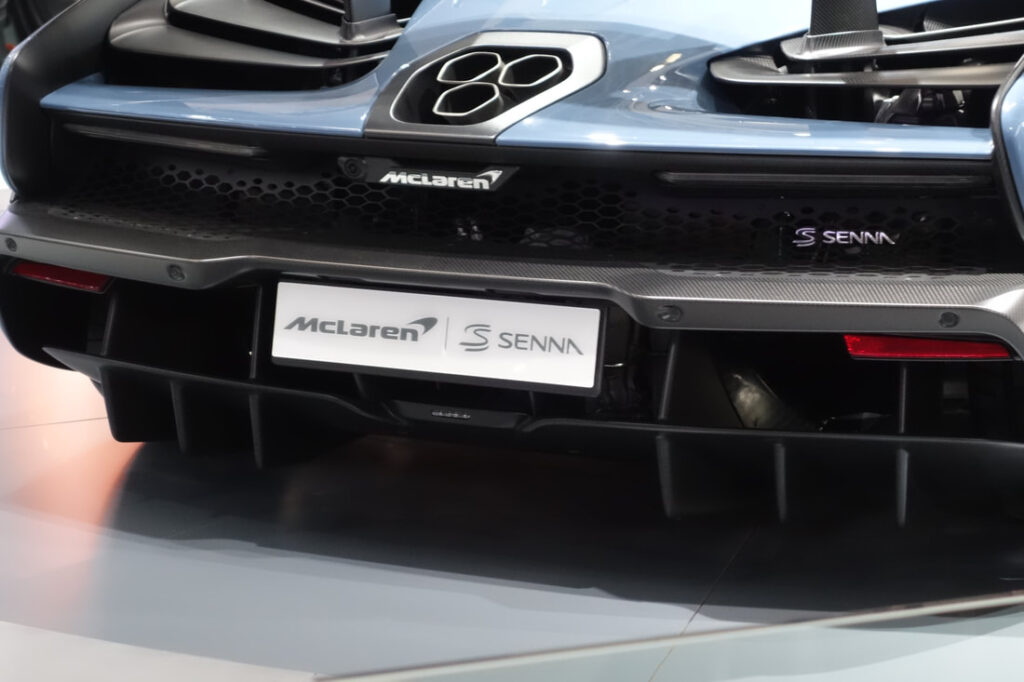
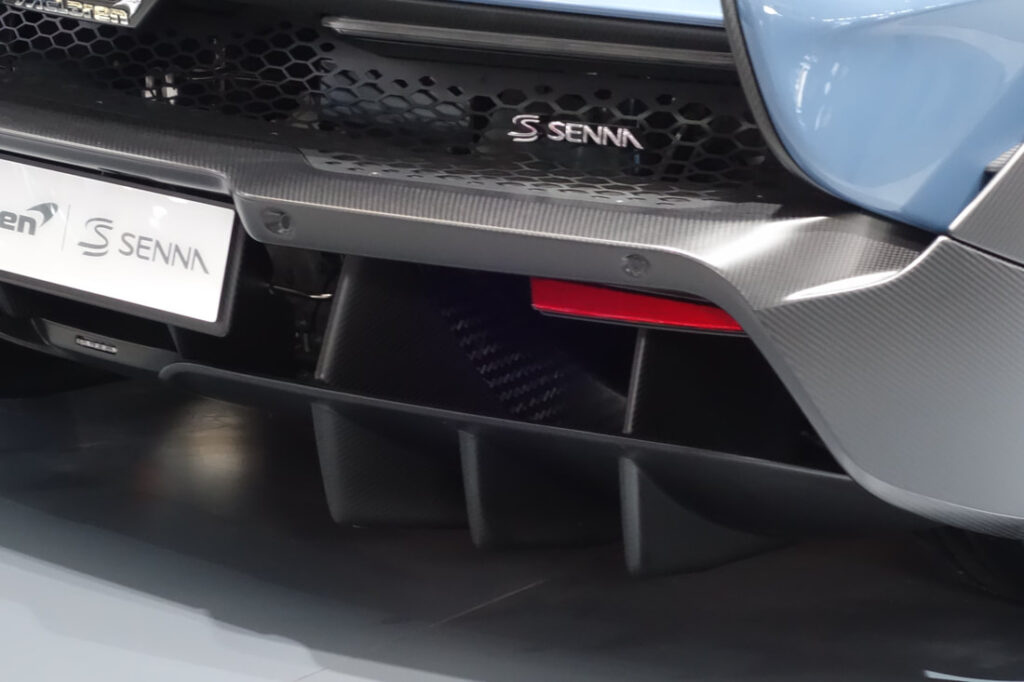
The double diffuser is unmistakeable. Crafted from a single piece of carbon fibre, it starts under the rear axle and as it increases it height serves to accelerate air out from under the vehicle.

